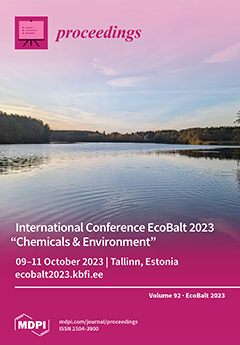In the renewable energy field, the conversion of solar light into electrical or chemical energy is considered essential to moving towards a truly green energy economy. Solar energy can be harnessed not just through generating electricity with photovoltaic cells but also by driving
[...] Read more.
In the renewable energy field, the conversion of solar light into electrical or chemical energy is considered essential to moving towards a truly green energy economy. Solar energy can be harnessed not just through generating electricity with photovoltaic cells but also by driving photoelectrochemical (PEC) reactions such as water splitting or pollutant oxidation. In this study, TiO
2 films were synthesized electrochemically through a procedure called plasma electrolytic oxidation (PEO). Under specific conditions, as the Ti substrate dissolves and the oxide film grows, electron discharges occur across the film, and this ionizes both the oxide and some amount of electrolyte that had been in contact with it. The mixture then cools, leaving a macroporous TiO
2 structure. What is particularly interesting for PEC applications is that the films can be crystalline and doped after synthesis. XRD analysis revealed that a TiO
2 film that had been obtained at a voltage of 200 V had an anatase crystal structure. In addition, during ionization and cooling, ions from the solution can be incorporated into the film. By adding 0.1 M Cu
2SO
4 into the synthesis electrolyte, we were able to incorporate Cu into the films, as proven EDX and XPS. The TiO
2 and heterostructured films showed good PEC water-splitting activity and stability in alkaline media when illuminated with 365 nm LED light. It was found that the photocurrent obtained depends on the synthesis voltage and that the heterostructured films would generate ~2 times larger photocurrents. In addition, further surface functionalization (e.g., with Au) was investigated. Electron–hole recombination was evaluated using an advanced non-stationary photoelectrochemical technique—intensity-modulated photocurrent spectroscopy (IMPS). Generally, films have very little recombination and only at lower overpotentials up to ~1 V. Overall, the synthesis of oxide films through PEO may provide an efficient alternative to obtaining crystalline films via annealing, and various heterostructures can be created simply by modifying synthesis conditions.
Full article



